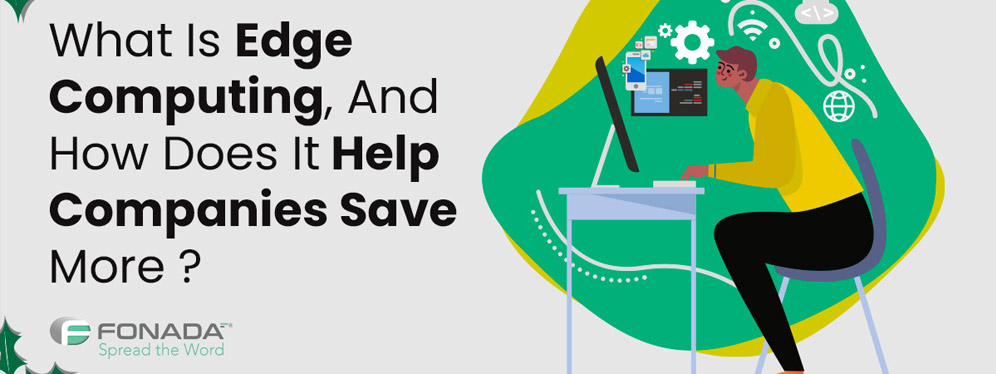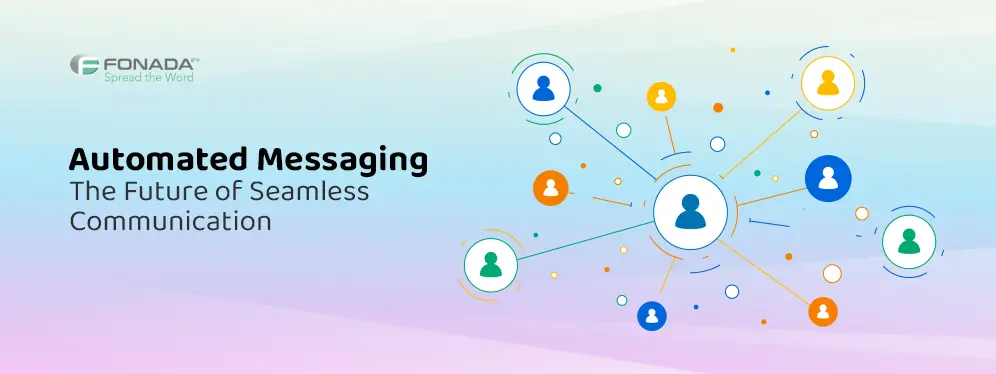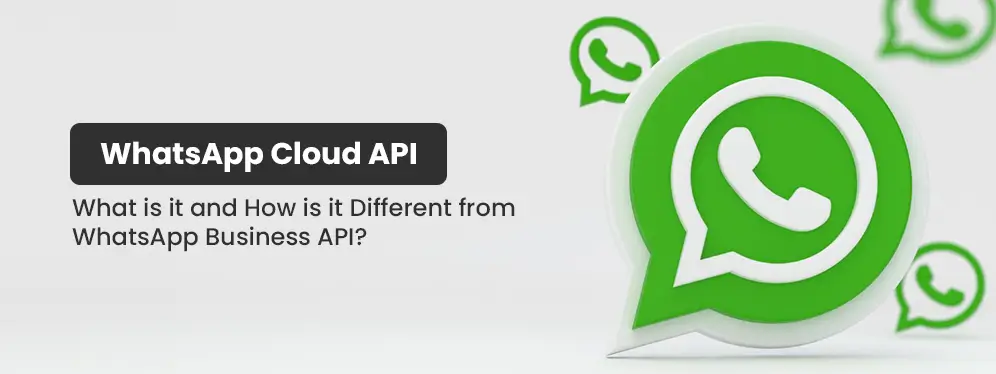Edge computing is a powerful distributed computing architecture that brings enterprise applications closer to the data sources like IoT devices or local edge servers. This proximity to the data source can result in several added benefits for businesses, like quicker insights, better response times, and improved bandwidth availability.
Powered by the cloud, edge computing technology enables business enterprises to reimagine experiences for purpose, people, and profitability, keeping the factors of speed and scale in mind. Edge computing solutions allow businesses to merge the digital and physical worlds by integrating online data and algorithms that improve experiences. This content sheds light on information about ‘what is edge computing’ and how edge computing solutions help business enterprises get better outcomes with little effort and investment.
Introduction (What Is Edge Computing ?
Global research firm Gartner predicts that 75% of data will be processed outside the cloud or traditional data center by 2025. The potential of cloud, mobile, or 5g edge computing makes it highly useful for transforming businesses across every function and industry. IoT devices’ growth and computing power have led to an unprecedented surge in data volumes, which will continue to rise with the increase in connected mobile devices through 5G networks.
In the past, cloud and AI promised to automate and speed innovation by providing actionable insights from data. However, the scale and complexity of data generated by connected devices have surpassed network and infrastructure capabilities.
Sending all the device-generated data to a centralized data center or the cloud causes issues with bandwidth and latency. Edge computing provides a more efficient alternative by processing and analyzing data closer to the point of creation. It reduces latency significantly, as data does not need to traverse over a network to reach a cloud or data center for processing. Edge computing and mobile edge computing together on 5G networks permit faster and more comprehensive data analysis, providing opportunities for deeper insights, faster response times, and better customer experiences.
Read More: 10 Mobile Messaging Tips To Optimize Your SMS Campaign
When Was Edge Computing Invented?
Edge computing was invented in the 1990s. The inception of edge computing dates back to the 1990s when Akamai introduced its content delivery network (CDN). At that time, the concept was to introduce nodes closer to the end-user’s location to deliver cached content, such as videos and images. The right answer to the question of what is edge in cloud computing lies in the benefits of edge.
Possible Components Of Edge Computing
The advantages of edge computing differ from traditional models where computing power is centralized at an on-premise data center. By deploying compute resources at the edge, companies can enhance their management of physical assets and create new interactive experiences. For instance, edge computing is useful in various use cases such as self-driving cars, smart equipment data, automated retail, and autonomous robots. The following are the possible components of edge computing.
Edge Devices
Edge computing comprises different components such as edge devices, including smart speakers, watches, and phones. These devices collect and process data locally while interacting with the physical world. Similarly, other devices such as point of sales (POS) systems, robots, sensors, and vehicles can also serve as edge devices if they compute locally and connect to the cloud.
Network Edge
Another component of edge computing is the network edge. Unlike edge devices, it does not require a separate edge network. For instance, it can be located on an individual edge device or a router. 5G technology offers powerful wireless connectivity to edge computing, bringing low latency and high cellular speed, which is particularly useful in cases where high responsiveness is required, and it is too costly and complicated to deploy compute resources on-premises. 5G offers exciting opportunities such as remote telesurgery, autonomous drones, smart city projects, and more.
On-Premise Infrastructure
Lastly, on-premises infrastructure, which includes servers, routers, containers, hubs, or bridges, manages local systems and connects to the network.
Edge Computing Vs. Cloud Computing
The difference between edge and cloud computing helps you better understand the utility and relevance of computing for various purposes. It is essential to recognize that cloud computing and edge computing are two distinct and separate technologies that cannot substitute for each other. Edge computing is employed to handle time-sensitive data, whereas cloud computing is used for processing data that is not time-critical.
Apart from addressing latency, edge computing is favored over cloud computing in distant locations where there is restricted or no connectivity to a centralized location. These areas require local storage that functions like a miniature data center, with edge computing being the perfect solution for it.
Edge computing is also advantageous for specialized and intelligent devices. Although these devices resemble PCs, they are not general-purpose computing devices designed to perform various functions. These specialized computing devices are gifted and respond to specific machines in a particular way. However, this specialization can be a disadvantage for edge computing in a few industries that require immediate responses.
Thus, we have discussed the differences between edge computing and cloud computing. In the following sections, you will delve into the future of these platforms in greater detail.
How Does Edge Computing Reduce Latency ?
Edge computing owns the capability to decrease latency by lowering the gap between the network’s edge and processing power. This edge technology smartly creates edge devices like IoT sensors.
Latency As A Significant Challenge For End-Users
While some users of smart devices may not be bothered by latency, it can have severe consequences for other devices. For example, autonomous cars depend on regular communication with the cloud to operate their self-driving and machine vision algorithms, and even slight latency can significantly affect their performance. It can result in inconsistent behavior and glitches, leading to dangerous driving or accidents.
Surgery robots, which enable telesurgery, also require a near-real-time connection to the cloud. These robots can help make surgery more accessible and minimize pain, but latency can cause delays in processing, resulting in unusual behavior that can make surgery with robotics more difficult. Even for devices where latency is not a matter of life or death, it can still negatively affect their performance.
How Does Edge Computing Lessen Latency For End Users?
Latency, or delay in data processing, can significantly reduce the performance of smart devices that rely on the cloud for useful data storage and analysis. These devices typically don’t have enough processing power or storage to perform all the necessary analysis on-device, so they send some of the work to the cloud. However, the cloud can be far away from the devices on the “edge” of the network, resulting in delays in data processing and analysis.
Edge computing reduces latency by moving some of the work that stereotypically takes place in the cloud to the “edge” of the network, which is closer to end-users and their devices. Edge nodes, decentralized data centers, can handle some of the work normally done on the cloud, and edge devices themselves can also handle some computing work.
Edge computing systems determine which information needs cloud processing and which information can be handled locally to reduce latency. Tasks requiring greater processing power or storage or work that isn’t a top priority are sent to the cloud for processing. Higher-priority work is kept local to reduce latency on important analyses.
As responsive or real-time data processing becomes more important, businesses are turning to edge computing as a solution for the problem of latency in internet-connected edge devices. According to Gartner, the fraction of enterprise-generated data processed outside an old-style centralized data center or cloud will grow from 10% to 75% by 2025.
Read More: Cloud Contact Center: What Is It And How Does It Work?
Edge Computing Advantages
Energy reduction by Chicago Smart City Lighting, reduced dependence on centralized cloud servers by Walmart and repurposed existing real estate by FedEx, Dell, and Switch are the best examples of edge computing in the real world.
How Can Edge Computing Be Used To Improve Sustainability ?
Edge computing can improve device speed and performance by keeping processing close to the device, which helps to reduce costs and increase efficiency. However, there are other reasons why companies should consider using edge computing to reduce environmental impacts.
One of the unique benefits of edge computing is that it reduces networking traffic going in and out of centralized servers, which reduces bandwidth and energy consumption. This frees up bandwidth at the data center and for any centralized servers on-premises. Furthermore, data that requires processing in the cloud tends to be more useful data, which is limited by the constraints of the edge device. The device handles what it can and sends only the critical data (if any) to the cloud. These natural limitations prevent unnecessary processing or sprawl.
Many companies can use existing devices rather than invest in new equipment when moving to the cloud. With edge computing, many companies already have sensors and devices that are currently underutilized. By processing data locally instead of sending everything to the cloud, companies can reduce their dependence on the central cloud and their contributions to energy consumption.
Edge computing is designed for efficiency, as the device’s hardware naturally restricts resources on edge devices. Every aspect of an edge stack is optimized to work efficiently. Additionally, many devices can run even without a continuous internet connection, allowing processing to continue offline and further reducing overall energy consumption.
Top 14 Advantages Of Edge Computing
Edge computing offers several significant advantages, making it a valuable approach in today’s digital landscape. Some of the key benefits of edge computing include:
- Low Latency: Edge computing minimizes data travel distances, reducing latency or delay in data processing. This is crucial for applications requiring real-time or near-real-time responses, such as autonomous vehicles, industrial automation, and augmented reality.
- Improved Performance: By processing data closer to the source, edge computing can enhance the performance of applications and services. This results in quicker response times, smoother user experiences, and improved overall system efficiency.
- Bandwidth Efficiency: Edge computing reduces the volume of data that needs to be transmitted to centralized data centers or the cloud. This conserves network bandwidth and lowers data transfer costs, especially in scenarios with constrained or expensive connectivity.
- Enhanced Privacy and Security: Data remains localized or is processed at the edge, reducing the risk of data breaches or unauthorized access during data transmission. This is especially important for industries like healthcare and finance that handle sensitive information.
- Reliability: Edge devices can continue to operate even when they lose connectivity to central infrastructure. This ensures that critical functions can continue to run without interruption, making edge computing suitable for applications with high uptime requirements.
- Scalability: Edge computing enables organizations to scale computing resources as needed at various edge locations. This flexibility allows for dynamic resource allocation to handle fluctuations in demand or the addition of new edge devices.
- Redundancy: Distributed edge environments can be designed with redundancy in mind. If one edge node or device fails, the workload can be seamlessly shifted to nearby nodes, minimizing downtime and service disruptions.
- Offline Operation: Edge devices can perform computations and make decisions without requiring a constant internet connection. This is beneficial in remote or intermittent connectivity scenarios.
- Cost Savings: Edge computing can reduce the costs associated with transmitting large volumes of data to central data centers or the cloud. It can also optimize resource utilization, minimizing the need for overprovisioning.
- Customization: Organizations can tailor edge computing solutions to meet specific application requirements, allowing for more fine-grained control over how data is processed and analyzed.
- Edge AI: The integration of artificial intelligence at the edge allows for real-time decision-making and automation, enabling intelligent processing and responses without relying on a centralized AI infrastructure.
- Compliance: Edge computing can help organizations comply with data sovereignty regulations by ensuring that data remains within specific geographic boundaries.
- Reduced Network Congestion: By handling data locally, edge computing alleviates network congestion, especially in situations with a high volume of connected devices or users.
- Energy Efficiency: Edge devices can optimize power consumption and reduce energy costs by processing only the necessary data locally, rather than sending it to distant data centers.
Overall, edge computing is a valuable strategy for addressing the evolving demands of modern applications, especially those driven by IoT, 5G, and real-time data processing requirements. It offers a balance between centralized cloud computing and purely local processing, providing the agility and responsiveness needed in today’s interconnected world.
12 Types Of Edge Computing
Edge computing encompasses a range of architectures and deployment models to process data closer to its source. These types of edge computing can be categorized based on their proximity to the data source and the level of processing they perform:
1. Device-Level Edge Computing
- Local Processing: Data is processed directly on the edge device itself, such as a sensor or IoT device. This minimizes latency and reduces the need for constant communication with a central server.
2. Fog Computing
- Fog Nodes: In fog computing, intermediate computing nodes, often referred to as “fog nodes,” are placed between the edge devices and the central cloud or data center. These fog nodes perform data processing and filtering, reducing the load on the central cloud.
3. Edge Servers
- Micro Data Centers: Small-scale data centers or server racks are deployed at the edge of the network. These edge servers perform local processing and can serve as a bridge between the local devices and the central data center.
4. Multi-Access Edge Computing (MEC)
- Mobile Network Edge: MEC brings computing resources to the edge of mobile networks, allowing applications to run with minimal latency. This is crucial for emerging technologies like 5G and low-latency applications.
5. Cloudlet
- Mini Cloud Data Centers: Cloudlets are small-scale cloud data centers that are strategically placed at the edge of a network. They provide computing resources for nearby devices and applications.
6. Regional Data Centers
- Edge Data Centers: Larger data centers located closer to the data source but not as close as device-level edge computing. They serve a regional area and provide more extensive computing and storage capabilities.
7. Content Delivery Networks (CDNs)
- Edge Caches: CDNs use edge servers and caching to deliver web content, media, and other data from servers located near the end-users. This reduces the load on the origin server and improves content delivery speed.
8. Satellite Edge Computing
- Processing on Satellites: In satellite communication systems, edge computing can be applied on the satellites themselves to reduce latency for applications such as remote sensing, weather forecasting, and communication.
9. Autonomous Edge
- Edge Devices with AI: Autonomous edge devices, such as autonomous vehicles and drones, incorporate edge computing and AI for real-time decision-making and navigation.
10. Industrial Edge
- Manufacturing and Industrial IoT: In industrial settings, edge computing is used to process data from sensors and machines for real-time monitoring and control of manufacturing processes.
11. Retail Edge
- Brick-and-Mortar Retail: Edge computing in retail involves using edge devices and processing for inventory management, customer analytics, and personalized shopping experiences.
12. Smart Cities
- Citywide Edge Infrastructure: Smart cities leverage edge computing for applications like traffic management, public safety, waste management, and environmental monitoring.
These types of edge computing are not mutually exclusive and can be used in combination to create a comprehensive edge computing architecture that meets specific business or application requirements. The choice of edge computing approach depends on factors such as latency tolerance, data volume, security considerations, and the need for real-time processing.
Conclusion
Edge computing technology is an innovative technology that enables companies to process data closer to end-user devices, reducing latency and improving response times. The benefits of edge computing solutions go beyond just speed and latency, as it also offers improved security, cost savings, greater reliability, and scalability.
However, deploying an edge computing solution requires careful consideration of various factors such as physical location, security requirements, scale needs, and connectivity management. When you need to know what edge computing is, experienced and competent edge solution providers in India can help you with quality computing solutions.
Despite the challenges, edge computing has proven to be a game-changer for many companies seeking to optimize their business operations and stay ahead of the competition. By leveraging the power of edge computing, companies can make their data more relevant, useful, and actionable, ultimately saving them more time, money, and resources. As the world becomes increasingly connected and data-driven, edge computing will play a vital role in helping companies extract value from their data and gain a competitive edge in the marketplace.
Frequently Asked Questions
Edge computing is a decentralized computing approach where data is processed closer to its source, reducing latency and improving real-time processing. Unlike traditional cloud computing, it enables faster decision-making and is particularly useful in IoT, remote locations, and applications requiring low latency.
Edge computing is used in various industries and applications. It’s applied in autonomous vehicles, manufacturing, and smart cities for real-time data processing.
Edge computing offers reduced latency and faster processing by bringing data processing closer to its source. This is critical for real-time applications like IoT, autonomous vehicles, and industrial automation. It also enhances privacy and security by processing sensitive data locally. Edge computing is cost-effective as it reduces data transfer to centralized cloud servers, making it ideal for various industries and applications.
Key features of edge computing include:
1. Low Latency: It minimizes data travel time for real-time applications.
2. Decentralization: Processing occurs closer to data sources, reducing network dependence.
3. Efficiency: It optimizes bandwidth and reduces cloud server loads.
4. Improved Security: Data can be processed locally, enhancing data privacy.
5. Scalability: Edge systems can be scaled as needed for various applications.
A prime example is autonomous vehicles. They use onboard edge devices to process sensor data locally, enabling quick decision-making without relying solely on distant cloud servers. This enhances safety by reducing latency, ensuring rapid responses to changing road conditions.
No, 5G is not edge computing, but they are closely related. 5G is a high-speed wireless network technology, while edge computing is a distributed computing architecture. However, 5G can complement edge computing by providing the fast, reliable connectivity needed for edge devices to communicate and process data efficiently. Together, they enable advanced applications and services.
The future of edge computing looks promising. It will continue to grow with increased adoption in IoT, AI, and autonomous systems. Edge AI will become more prevalent, enabling smart devices to make decisions locally. Security and privacy concerns will also drive innovations in edge computing. Overall, it will play a vital role in enabling faster, more responsive, and efficient technologies.

















